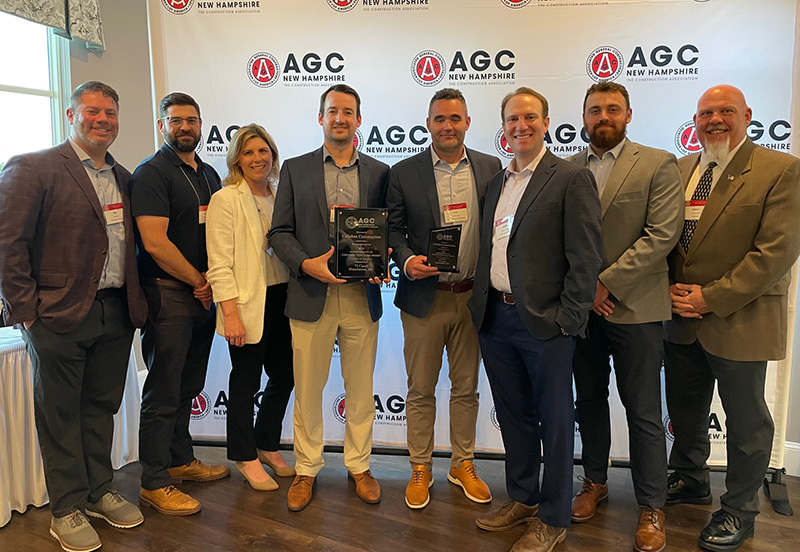News: Construction Design & Engineering
Posted: February 14, 2008
Proper training is the foundation to authentic preservation practices
Traditionally-trained craftsmen are becoming more and more difficult to find in the building trades these days. In fact, the majority of people working in the trades today have little or no formal training.
Long-term apprenticeships are rare, and secondary and post secondary trade schools that once offered courses in building trades have changed their focus to technical and/or vocational training.
Today, most workers are trained on the job and are likely to have major gaps in their skills and overall understanding of the trade. Few choices are available for traditional trades training.
Traditional craft in the building trades has become a lost form. The modern carpenter "crafts" very little. Hand tools are few, and are often limited to those carried in a tool belt or drywall bucket. Most job site tools have either plugs or batteries - the use of hand tools is met with suspicion. The changes in practice make many trades now unrecognizable.
Is it construction, or merely installation?
Building materials have become standardized into modular systems of assembled components, and the process of building has become one of installation rather than construction. The quality of workmanship depends more on manufacturing standards than that of on-site workers.
The standards of acceptable workmanship have also substantially diminished. Fit and finishes have degenerated to appalling standards with caulking a universal remedy. We have accepted this "dumbing down" of standards to the point that quality workmanship goes unrecognized.
The good news is that traditional skills and craftsmanship are in demand today for work on historic buildings. Preservation has become a major niche market and continues to grow each year. Modern materials and practices, however, are often unsuitable for historic buildings. Preservation solutions require appropriate materials with a blend of traditional and contemporary skills.
The preservation community has been keenly aware of this and has long supported in-service training for workers to increase their knowledge of historic issues. These programs have generally been successful but, because they are usually seminars on specific topics, their impact on craftsmanship is limited.
Three skill sets basic to proper preservation techniques
The training of traditional trades and craftsmanship is complex. It involves a mix of historic and modern skills and knowledge, as well as an attitude about work that matures over a lifetime. Training programs must begin teaching skills as the basis for craftsmanship development.
For traditional woodworkers, they include three major skill sets:
1) the mastery of hand tools,
2) layout, and
3) the processes that organize work.
The care and use of sharp tools is the basis for understanding craftsmanship. Without keen edges, the process of cutting and shaping material accurately is impossible. This basic concept of sharpness - a concept unfortunately lost most modern "plug in" carpenters - must be the first skill learned.
Layout is the second important basic. Without accurate layout, pieces do not fit, regardless of how keen the tool's edge. Layout skills develop the spatial senses necessary to envision all building.
And, finally, process is developed from the assembly of many tool skills and is essential to the development of efficient work. The concept of "what comes first" and the sequences of operation are sometimes difficult to grasp. Continued practice of these basics leads to the recognizable qualities we appreciate as workmanship.
Not just skills, but an attitude
Craftsmanship, however, goes beyond workmanship and quality. It is an attitude that is learned through experience and developed over a lifetime. It is a continuum of perfecting ways to do good work that encompasses all facets of the trade.
"Craftsmanship" may also be more about how one is perceived by others, rather than a self-image. It begins with skills and continues with an unswerving sense of commitment to attain the highest workmanship.
We need more traditional craftsmen in today's world. They have become rare, and need to be recognized not only for their quality work but also for the example that they set as productive individuals who make a difference.
Robert Adam heads the preservation carpentry program at the North Bennet St. School, Boston.
MORE FROM Construction Design & Engineering
Nobis Group awards Robinson and Moreira STEM scholarships
Concord, NH Nobis Group, a 100% employee-owned consulting firm specializing in engineering and environmental solutions across the Northeast, has named the recipients of its 2025 STEM Scholarship: Andie Moreira of

Columns and Thought Leadership

Careers in Construction Month focus on training and safety - by Joe Camilo
October is Careers in Construction Month, and rarely has it been more consequential. According to our chapter’s national parent organization, the construction industry needs to attract half-a-million new workers in the coming year to meet demand. Addressing that need is a huge job, but we at ABC MA are trying to do our part.

Ask the Electrician: Is summer a prime time for commercial electrical maintenance?
The answer is “Yes!” While January marks the official new year, many businesses view September as a fresh start. This makes summer an ideal time for commercial property owners to schedule long-term electrical maintenance projects.

The rise of incubators and co-working spaces: The latest in life sciences - by Matt Combs
In recent years, the life science industry has witnessed a shift in how companies operate and innovate. One of the key driving forces behind this transformation is the emergence of incubators and co-working spaces specifically tailored to meet the unique budget and schedule needs of startups.

The design-build advantage: Integrated interior design solutions - by Parker Snyder
When it comes to corporate interior spaces for both commercial and industrial projects, partnering with a design-build firm with in-house interior design services can offer clients many benefits. Unlike traditional delivery methods where interior designers operate independently from the design and construction teams, often creating a longer project timeline as cost negotiations and revisions ensue







.png)